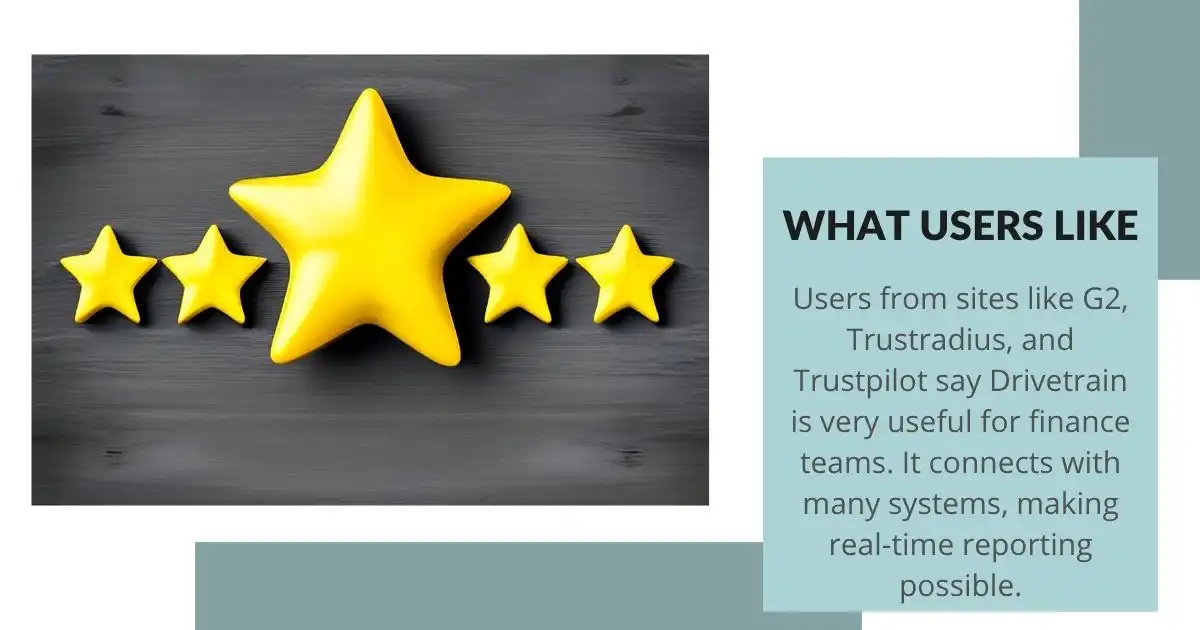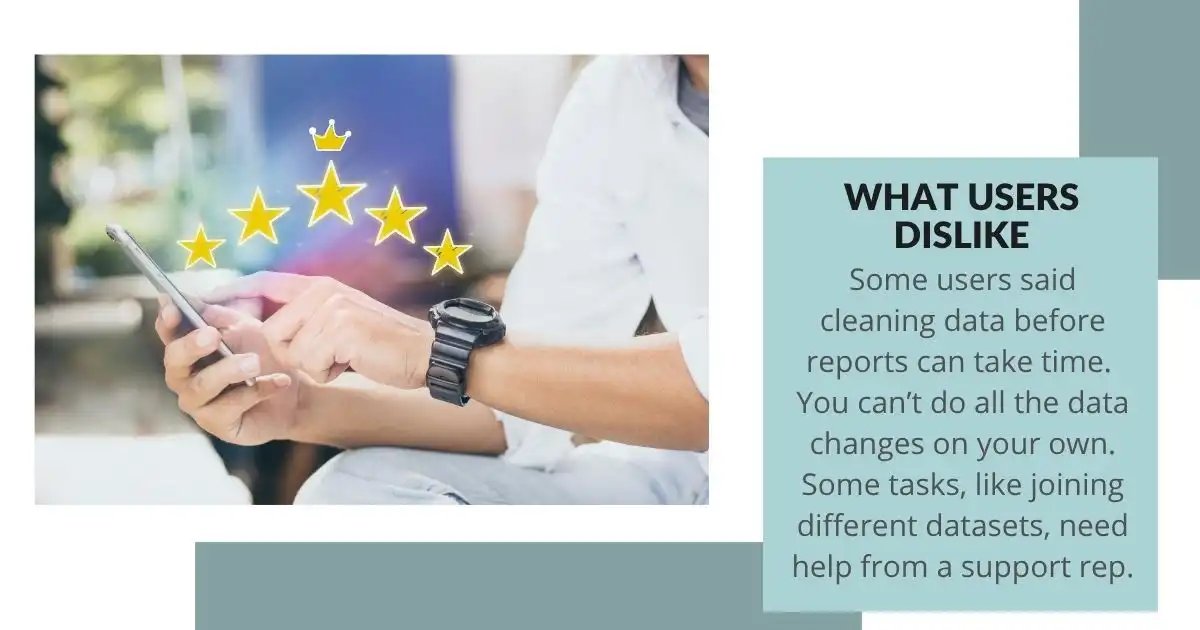A colleague once worked for a startup that initially appeared promising on paper. Revenue was growing, the product had traction, and the team kept hiring. But within two quarters, everything changed. Budgets slipped. Cash dried up. Their runway vanished faster than expected.
What caused it?
The finance team used spreadsheets and outdated reports, with no clear link between headcount, expenses, and revenue. Decisions were siloed, and issues surfaced too late to avoid cuts.
They didn’t need more people. They needed more visibility.
That’s where Drivetrain makes a difference. It connects data across your systems, keeps your models in sync, and lets finance teams catch problems early. You can link hiring plans to revenue, match forecasts to actuals, and respond before the numbers go off track.
So what exactly can you expect from Drivetrain?
Drivetrain Features
Drivetrain lets finance teams build and analyze models across many dimensions. It comes with over 100 ready-to-use metrics. One standout feature is its AI-powered what-if analysis tool. This helps users see the possible effects of changes in one area on other parts of the business. It also shows these effects visually, which helps teams understand the impact more clearly.
- Get accurate, up-to-date data to help you decide faster.
- Use interactive charts to quickly check trends and differences.
- Dig into individual transactions to find important details.
- Build models using easy formulas.
- Create large, flexible models much faster than before.
- Use AI for forecasting and testing different scenarios to support decisions.
Sample Integrations

Drivetrain works well with many popular financial, HR, and business systems, helping teams bring all their data into one place for faster reporting and smarter planning. Here’s how each integration supports your workflow:
NetSuite
Connect your ERP system to pull in financials, transactions, and operational data. This helps streamline month-end close and supports accurate forecasting directly from your accounting system.
Use Case
A controller wants to create a consolidated P&L across multiple subsidiaries using live general ledger data from NetSuite. Drivetrain pulls in the latest figures so reports are always current without manual uploads.
QuickBooks
Import accounting data, including invoices, bills, expenses, and balance sheet information. This makes it easier for small and mid-sized businesses to centralize reporting and track key financial metrics.
Use Case
An FP&A analyst at a growing startup uses Drivetrain to build a rolling cash flow forecast. With QuickBooks integrated, bank balances, invoices, and expenses are updated daily, reducing time spent copying data.
Xero
Sync real-time financial data such as bank feeds, cash flow, and payables. Drivetrain uses this connection to help teams monitor trends and plan budgets without switching between platforms.
Use Case
A finance manager tracks monthly revenue by product line. Drivetrain pulls this from Xero automatically, allowing the team to create revenue dashboards by category, customer, or region.
Zoho Books
Bring in sales, expenses, taxes, and inventory figures from Zoho to create more detailed financial models and reports inside Drivetrain
Use Case
A small business CFO uses Zoho Books for invoicing and expenses. Drivetrain imports these details to generate a budget vs. actual report, highlighting areas that need cost control.
Sage
Integrate with Sage to access your general ledger, budgeting details, and vendor records. This allows your finance team to create reports that reflect your actuals without manual effort.
Use Case
A manufacturing firm using Sage integrates with Drivetrain to track COGS (cost of goods sold) and inventory expenses. This helps them forecast margins with better accuracy.
HubSpot
Use CRM data such as pipeline forecasts, customer segments, and sales activity to better align revenue projections with financial planning.
Use Case
A revenue operations team links HubSpot to Drivetrain to track the sales pipeline. They forecast future revenue based on current pipeline stages, helping finance align hiring and budget plans with expected sales.
Stripe
Pull payment data, revenue by product or region, and customer billing trends to support real-time revenue modeling and subscription analytics.
Use Case
A SaaS company integrates Stripe to monitor monthly recurring revenue (MRR) and churn. Drivetrain auto-generates dashboards that track customer payments and subscription health.
ADP
Access payroll, employee costs, and headcount data for better workforce planning and cost forecasting. This helps connect HR-related expenses directly to your financial models.
Use Case
An HR and finance team uses Drivetrain to plan salary costs for the next quarter. With payroll and headcount data pulled from ADP, they can easily model compensation by department and role.
BambooHR
Import employee data such as departments, job roles, and compensation to improve headcount planning, hiring forecasts, and team-based budget planning.
Use Case
A CFO prepares a workforce plan using current employee records and salary data from BambooHR. Drivetrain connects this to budget models, making it easy to model hiring scenarios and team growth plans.
What Users Like and Don’t Like
Drivetrain was ranked as a leader in Financial Analysis by G2’s Spring 2024 report. It also placed first in Reporting and Planning for mid-sized companies for the third time in a row.
It has a strong 4.8 rating on G2, but the number of reviews is still low since the company is relatively new.
What Users Like

Users from sites like G2, Trustradius, and Trustpilot say Drivetrain is very useful for finance teams. It connects with many systems, making real-time reporting possible.
Many users say it offers more features than Excel while keeping a familiar look and feel. The formula language is similar, so Excel users can pick it up quickly. You can also save key metrics like ARR, CAC, and Burn, and reuse them in different models.
Forecasting in Drivetrain is flexible. Users say they can build connected forecasts across revenue, costs, balance sheets, and cash flow. Writing formulas feels easy and doesn’t take long to learn.
Drivetrain works well with tools like Salesforce, NetSuite, and Google Sheets. This helps financial data move smoothly between systems.
The platform supports teamwork. Features like tagging teammates in comments, setting user roles, and creating easy-to-read graphs help teams work together better. Its interface is simple enough for both finance and non-finance staff to use comfortably.
What Users Dislike

Some users said cleaning data before reports can take time. While Drivetrain makes many tasks faster, this first step often slows things down.
You can’t do all the data changes on your own. Some tasks, like joining different datasets, need help from a support rep.
At first, some users found the training material limited, but they said the support team helped a lot. Drivetrain is now adding more built-in guides and learning tools.
Users also mentioned that although updates happen twice a day, they’d like changes to appear sooner, especially during busy work hours. Some also had trouble with filters not working smoothly.
Finally, while the company says Excel users will adapt quickly, some found the switch harder than expected. The use of DAX-style syntax and a pivot-style interface takes a few days to get used to.
Your Finance Team Deserves Better Tools—Start Improving Now
Drivetrain gives finance teams more than just data—it gives control, speed, and clarity. You can create models faster, plan with confidence, and share insights that people understand. With strong integrations, flexible forecasting, and real-time data access, the platform replaces time-consuming spreadsheets and scattered tools with one connected workflow.
Still, no software is perfect. Some tasks take support to complete, and getting used to the platform may take a few days. But the pay-off is real: better planning, better reports, and a better way to work.
If your current setup is slow, limited, or holding your team back, it’s time to rethink how you work. Don’t settle for systems that can’t keep up with your needs. Move toward tools that help your team work smarter, not harder.
Take the next step. Find out what your team could do with the right setup behind them.
FAQs
What is Drivetrain software and how does it support FP&A teams?
Drivetrain software is a modern FP&A platform that helps finance teams automate planning, forecasting, and reporting. It centralizes data from various sources and uses powerful modeling capabilities to streamline financial operations and decision-making.
What does the Drivetrain company specialize in?
The Drivetrain company specializes in AI-driven financial planning and analysis solutions. Their platform is built to support agile, data-informed decision-making across finance, sales, and operations teams.
What are some of the key Drivetrain tools available for finance teams?
Drivetrain offers tools for scenario modeling, rolling forecasts, real-time dashboards, and automated variance analysis. These drive train tools are designed to improve visibility, accuracy, and speed in financial planning processes.
How does Drivetrain AI enhance financial planning and analysis (FP&A)?
Drivetrain AI applies machine learning and smart automation to detect trends, predict outcomes, and reduce manual effort in financial workflows. It enables finance teams to shift from reactive to proactive planning with greater confidence and efficiency.
